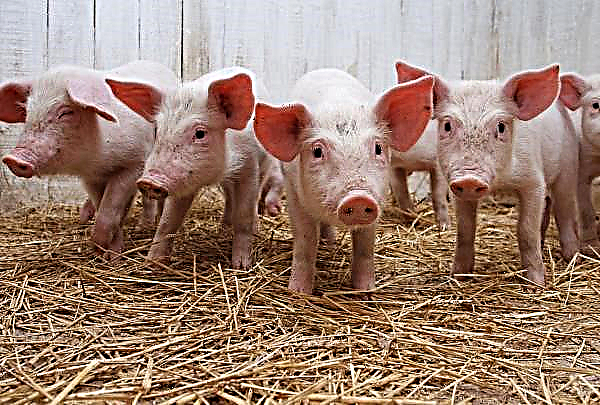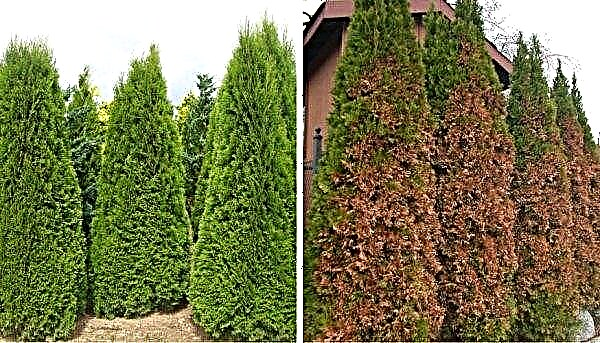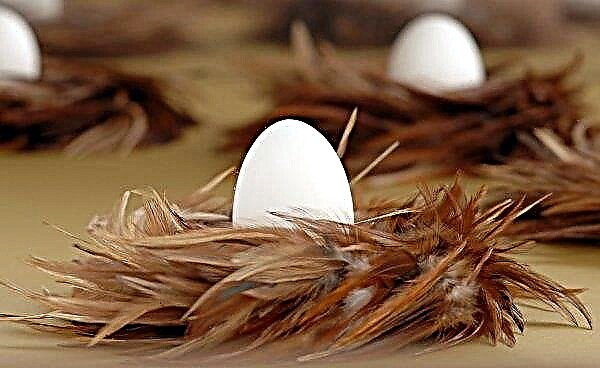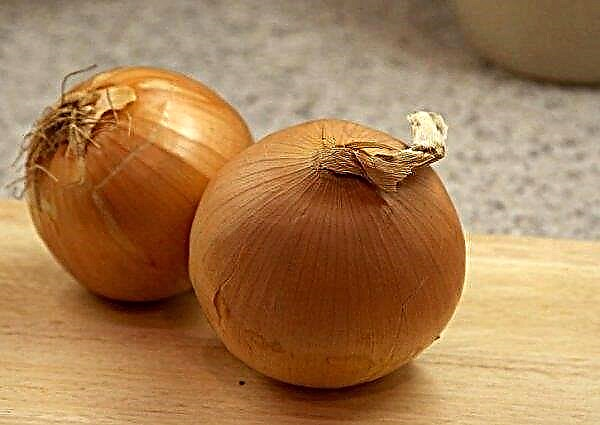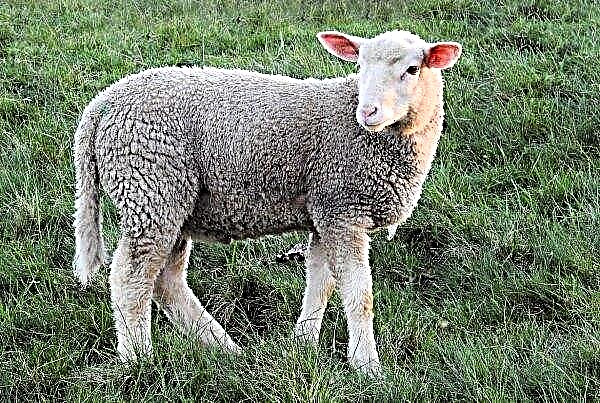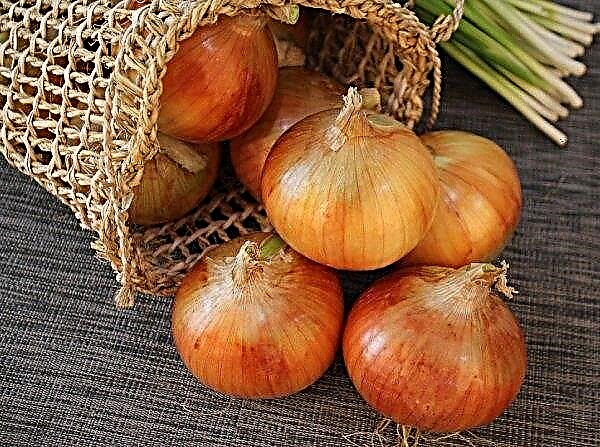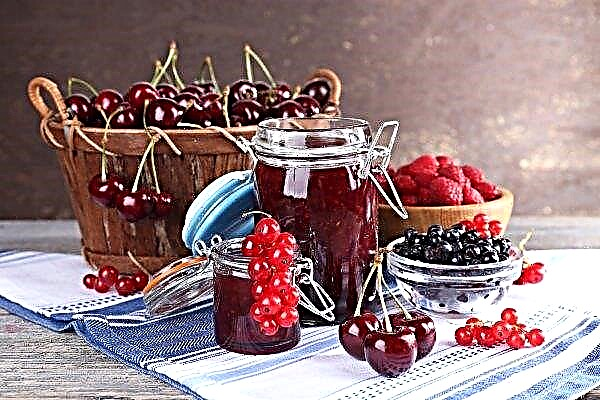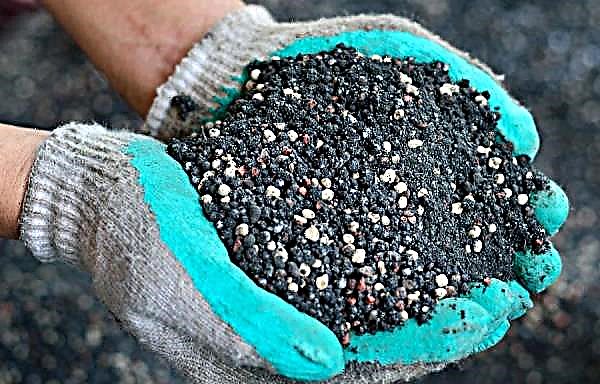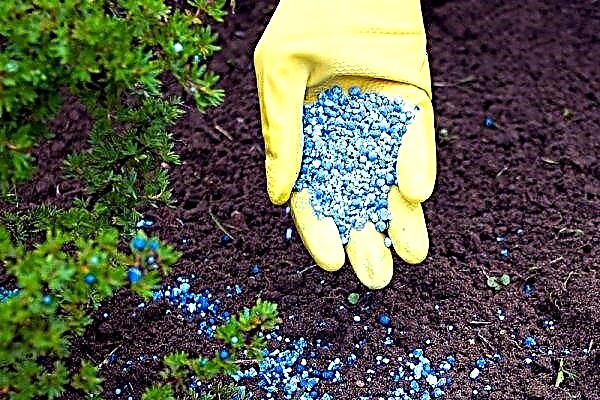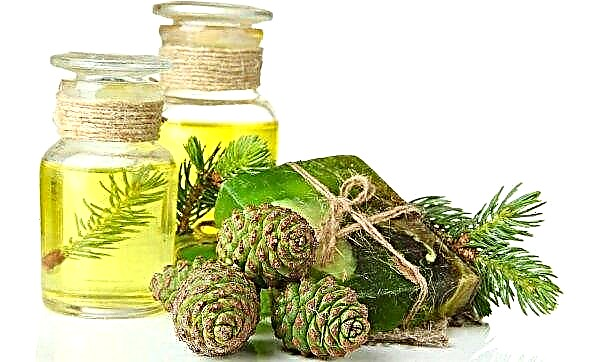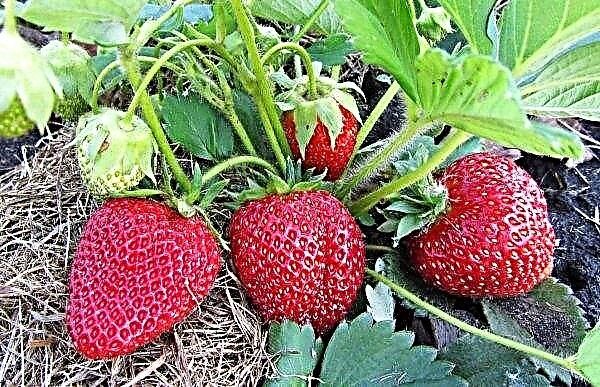Hydrangea paniculata Limelight is one of the popular varieties of panicled hydrangea. The article describes the appearance of the shrub, gives tips on planting, care and its use in landscape design.
Botanical grade description
Shrubs grow to a maximum of 2.5 m in height. Annually increases in growth by 25 cm. The crown is branched, easily amenable to formation during pruning. The stems are dark brown in color. Foliage in spring is a dark green hue, and in autumn it becomes more purple. Thanks to this, the decorativeness of the plant is much increased. The leaves are densely arranged, cover the branches with a dense hat.
Hydrangea is covered with flowers from the beginning of July to the end of September. If the bush grows on a site where there are no drafts, then it can bloom until the end of October. The flowers are medium sized, bright green. Gradually become white, and by September they take on a pale pink color.
The color scheme also depends on the amount of light. In the penumbra, the shade is green, and in the sun it is light green, approaching a whitish color. Limelight hydrangea flowers are connected into large cone-shaped inflorescences with a diameter of up to 25 cm.
Video: Growing Hydrangea Limelight
Hydrangea Limelight in landscape design
Shrubs are planted both singly and in groups with other plants. It serves as a decoration for front gardens and paths. Planted next to irises, lilies, peonies. It will become an indispensable part of compositions with trees and shrubs. Hydrangea is planted as an ornament of high fences and buildings.
In April - May, flowers such as daffodils, tulips, crocuses, hyacinths are often found next to hydrangea. She emphasizes the brightness of their colors with her green riot.Important! If there is a small area, you can choose a miniature variety - hydrangea Little Lime («small lemon»). This shrub grows no higher than 1 m, but at the same time has all the decorative properties of Limelight.

Growing conditions on the stem
In order to grow hydrangea on a stem, several parameters must be taken into account, which include lighting, temperature and humidity, type of soil.
Lighting
The shrub does not tolerate directly directed rays of the sun. Planting a plant is best in areas where there is a shadow, and at noon the foliage does not suffer from sunlight.
Temperature and humidity
The plant is hygrophilous and does not tolerate dry soil. For this reason, hydrangea lime is planted in place with moderate humidity. The optimum air temperature during the growing season is +22 ... + 24 ° С. If it rises higher, then it will be necessary to increase watering.
The soil
Ideal for planting and growing shrubs are considered soils whose pH is from 5 to 5.5 units. On soils with neutral pH (7.3), development will be slow, which can provoke a lack of flowering. But you can always acidify the soil with peat.
How to plant
It is not so difficult to plant a bush, given all the nuances and follow the notes on the preparation, choice of time and place. And for convenience, a step-by-step landing instruction is given.
Landing time
Planting hydrangea is best in early May. Until this time, the weather is very changeable, and it is possible to lower the temperature even below 0 ° C. After, on the contrary, heat prevails, which slows down the growth of seedlings. You can also plant a plant in the fall. This is best done in September or early October.
Preparatory work
Before landing, dig a recess. Since the hydrangea roots are close to the surface, it should be about 50 cm deep and up to 1 m wide. 40 liters of water are poured onto the bottom of the recess. Moisture absorption will occur after about 24 hours, and then you can already begin to land.
Landing instruction
When the preparation work is over, it's time to start the process of planting. To do this, follow these steps:
- Fill the third part of the excavated recess with a mixture, which includes the soil itself, coniferous land, humus, peat and sand. In each recess, you will additionally need to pour 30 g of superphosphate.
- Next, place the seedling in a hole with the earth around the roots.
- Then the recess is covered with the prepared mixture and rammed with hands.
- The neck of the roots must be installed at a level with the surface of the soil.
- Water the plant using 10 liters of water.
- Mulch the soil around the trunk using sawdust, peat or straw. This helps to maintain moisture in the soil and prevents overheating in the heat.

How to care
When a bush is planted, it requires care and attention. Hydrangea care includes watering, top dressing, pruning, preparation for winter frosts and, of course, protection against diseases and parasites.
Did you know? In Japan, hydrangea is called Adzisai - "a flower that looks like a purple sun."
Watering
Attractiveness and flowering directly depend on soil moisture. The trunk circle should always be slightly moist. But you also need to make sure that water does not collect, because because of this, rotting of the roots can occur. You can also include sprinkling, literally 5-10 minutes. in the evening to keep the foliage green.
Top dressing
It is necessary to feed hydrangea in early spring. This will help ensure a dense deciduous cover and large inflorescences.
Feeding can be divided by month:
- March. It is necessary to use a mixture of 10 liters of water, 30 g of urea and 30 g of potassium sulfate. Dosage - 6 liters per plant. From organics - a solution of 2 liters of manure in 20 liters of water. Dosage - 6 liters per bush. In order for hydrangea to bloom, it will need minerals such as phosphorus and potassium. For this, you can use 30 g of superphosphate per 10 l of water. Watering is carried out similarly to the above;
- June. For many buds to appear, it is necessary to use a mixture of nitrophoska (30 g) and Agricola (30 g) per 10 liters of water. Watering to produce until completely absorbed;
- July. Fertilizer stimulates the blooming and prolonged flowering of hydrangea. For this, a complex of fertilizers is used, for example, “Kemira Flower” (“Fertika”). Dosing - 30 g per 10 liters of water. Water until completely absorbed;
- August. It is necessary to water the soil around the trunk with a mixture of water (10 l) and slurry (1 l). And yet, judging by the reviews, hydrangea "lemon" likes unusual top dressing. For example, once every 15 days, you can irrigate with a solution of kefir (1 l) and water (3 l);
- end of September - beginning of October. During this period, fertilizers containing potassium are used, which makes the roots of the bush stronger, which will help to endure winter frosts. 30 g of superphosphate and potassium sulfate are diluted in 10 l of water. Dosing - 1 bush 7 liters. To protect the soil from freezing and protect the roots, it is necessary to lay a layer of compost or humus up to 10 cm thick.

Mulching and loosening of soil
After the bush has been watered, it is necessary to loosen the soil in the near-stem circle. In hot weather, mulching is carried out. To do this, lay out a layer of chopped grass or coniferous bark.
Important! To give the branches flexibility and make them strong, it is necessary to water with a weak solution of potassium permanganate until completely absorbed. From March to May you need to water 3 times.
Hydrangea pruning
In order for growth to be rapid, hydrangea pruning is necessary. Branches are cut to 2/3 of the length. Thus stimulate the emergence of new shoots. The ideal time is considered to be in early April. In October, when hydrangea fades, it is also necessary to prune withered inflorescences and dried branches. This will protect against damage under the rubble of snow.
Winter preparations
Hydrangea lily (this is another name for the plant) is characterized by its frost resistance and easily tolerates low temperatures up to -35 ° C. But in very young shrubs, branches can freeze, which, in turn, can lead to a lack of flowering next year. For this reason, plants that are not yet 3 years old need to be hidden under shelters.
Important! Before you build a shelter for the winter, you need to cut off dried branches and inflorescences.
Before you begin wrapping, you must:
- Tilt and tie the shoots to the pegs that are driven into the ground.
- Sprinkle the shrub with fallen leaves and branches of needles.
- Lay roofing material on top.
- Fill the holes between the shelter and the bush with dry leaves.
 1- tilted shoots, 2 -cocking, 3- spruce branches, 4- lutrasil, 5- stone
1- tilted shoots, 2 -cocking, 3- spruce branches, 4- lutrasil, 5- stoneDiseases and pests, control methods and prevention
Hydrangea Lyme is susceptible to diseases such as:
- chlorosis of leaves. The leaf cover turns yellow, and the veins themselves continue to be green. This is due to excess calcium in the soil. To correct the situation, it is necessary to increase the acidity by adding peat and aluminum sulfate (1.5–5 kg per 1 m³). When yellowness does not pass, then the problem is a lack of iron. In this case, fertilizers with iron are used. For example, "Agricola." For prevention, it is recommended to mulch peat or shredded bark of conifers and to defend water for irrigation;
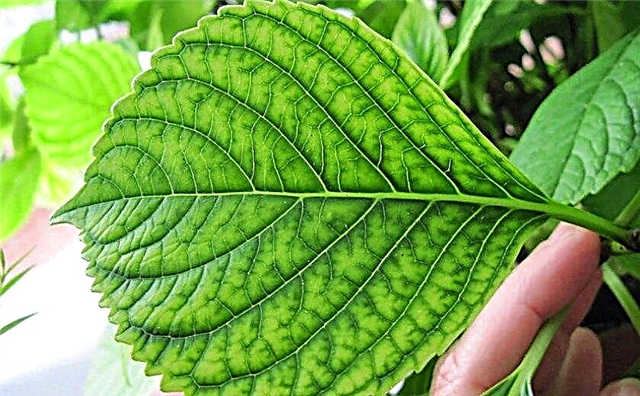
Pests that infect shrubs:
- aphid. Due to the defeat of these pests, the leaves curl and fall off. When there are few insects, they can not do much harm. You can get rid of single attacks of aphids with the help of ladybugs, lacewings and ghosts. For this, first colonies of parasites are knocked down with a jet of soapy solution, and then several tablespoons of sugar are poured onto the soil of the trunk circle. It will attract the above insects. You can also use the folk method. First you need to prepare a decoction and spray them with a plant. For a decoction you will need: 150 g of finely chopped garlic mixed with 5 l of water. Insist 15 minutes. Skip through the colander. Dilute with water in a 1: 1 ratio before spraying. If this does not help, then it is necessary to apply insecticides;
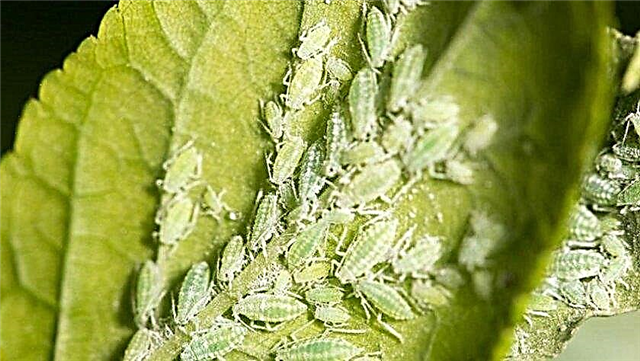
- ordinary spider mite. Hydrangea Limelicht, when attacked by these pests, loses its leaf cover. Foliage is food for them. You can find out about the presence of parasites by tan points on the leaves. They can be destroyed by spraying with insecticides 3 times with an interval of 8-11 days.

Breeding
Hydrangea can be propagated in two ways - seeds and cuttings. The seed method is used very rarely, since it requires too much time and effort, but at the same time brings more seedlings. And grafting is a quick and easy way, and the rooting process takes only a few months.
Did you know? Buddhists have a holy holiday — the birth of the Buddha. On this grand day, it is customary to decorate the small hall of the temple with hydrangea flowers.
Seeds
With the onset of May, you can start sowing seeds. To do this, follow these steps:
- Prepare a container with a depth of about 50 cm and a width of up to 1 m.
- At 2/3, fill the soil mixture, which consists of garden soil, peat and coarse sand.
- Seeds are immersed in the soil 1-3 cm deep.
- Put a thin layer of sand on top.
- After moistening the soil, it is necessary 1 time in three days until completely absorbed.
- Place a container with seedlings under the trees.
- Every 30 days, feed with liquid professional fertilizers for hydrangeas.
- On cold days, containers should be brought into a warm room (but not above + 18 ° C).
- After 2 years, the seedlings will ripen for planting in open ground.

Cuttings
For this method of reproduction with the onset of July, it is necessary to cut green cuttings from the upper shoots. Before planting, it is necessary to soak the scraps for a day in a root formation stimulator.
After that, you can proceed to the landing procedure itself, following the instructions:
- You must select a container measuring 50 cm deep and up to 1 m wide.
- Place in a 3/4 tank soil mixture, which consists of garden soil, peat and coarse sand.
- Dip the scraps into the substrate by 5-6 cm and cover with a layer of sand about 1 cm.
- The distance between the cuttings should be at least 7 cm.
- Cover the container with scrap polyethylene.
- Place the container in a dark place with an air temperature of approximately + 23ºC.
- Water the soil as needed until completely absorbed.

Root formation will occur within 3-4 weeks. From October to April, it is necessary to move the tank from the street to the shelter. After 2-3 years, the seedlings are sufficiently strong and will be ready for planting in open ground.
Hydrangea Light will decorate a garden or garden. Thanks to its large bright inflorescences, it refreshes any plantings. And, despite the fact that the bush requires exceptional care and a lot of time, it remains the most popular among gardeners.



